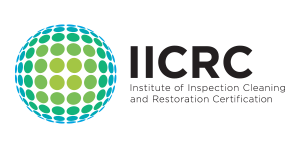The Best Guide To Dry Star Restoration
The Best Guide To Dry Star Restoration
Blog Article
The 5-Minute Rule for Dry Star Restoration
Table of ContentsSee This Report about Dry Star RestorationRumored Buzz on Dry Star RestorationAll About Dry Star RestorationSee This Report about Dry Star RestorationDry Star Restoration Can Be Fun For Anyone
Particularly in wintertime, home heating units are a common fire risk. Malfunctioning wiring or positioning heating systems too close to combustible materials like drapes can fire up a fire.
Products like motor oil or cleansing fluids can ignite under specific problems. Constantly shop these products effectively and far from warm sources. fire damage restoration companies. Data: According to the National Fire Defense Organization, house chemicals are accountable for a remarkable percentage of home fires every year. By knowing these common causes, you can take actions to make your home more secure.
The Ultimate Guide To Dry Star Restoration

Secret issues include: Water Breach: Water can permeate into wall surfaces, floors, and furniture. This can weaken the architectural honesty of your home. Form Growth: If water is moist rapidly, mold can begin to expand within 24-48 hours. Mold and mildew can cause health problems and more damages to your building. Structural Weakening: Water can damage wooden structures and cause metal parts to corrosion, making your home unsafe.
Next, we will dive into the actions involved in the fire damage remediation process. Fire repair is the procedure of cleaning, repairing, and bring back a property that has actually been harmed by fire.
Little Known Questions About Dry Star Restoration.
Particles Removal and Demolition: Damaged materials are securely eliminated, and any kind of dangerous materials like asbestos are dealt with suitably. Cleaning and Purification: Soot and smoke smells are removed using specific devices and therapies. Reconstruction and Repair Works: Ultimately, the building is rebuilt and restored, consisting of structural repairs and interior remediation - fire damage restoration companies. Fire damages encompasses numerous kinds of injury to a home: Physical Damage: This includes charring, smudging, and fragmentation of materials directly influenced by the fire.
Water Damage: Water used to snuff out the fire can lead to architectural weakening and mold and mildew growth otherwise properly taken care of. Fire remediation specialists make use of specialized methods and equipment to resolve all these sorts of damage, guaranteeing the property is secure and habitable once more. Next off, we will study the steps entailed in the fire damage restoration process.
From state-of-the-art water removal devices to specialized tools for smoke and soot elimination, we have the sources required to recover your residential or commercial property to its pre-loss problem. Our strategies are designed to be detailed and effective, reducing additional damage and speeding up the recuperation procedure. Our group contains licensed specialists that are professionals in fire damage remediation.
A Biased View of Dry Star Restoration
Their proficiency guarantees that every job is done right, supplying you with comfort throughout a challenging time. If you need fire damages remediation services, do not think twice to contact us. We're below to help you restore your home and your life after the fire. Last modified on 15th of July 2024.
(https://dry-star-restoration.jimdosite.com/)If there's a fire, smoke makes certain to follow. While the fire's smoke is composed of components that make your home dangerous to click to read more be in, the damages smoke leaves behind does not stop there. Smoke will certainly drift to seemingly every component of your home, sticking to furniture, decoration, curtains, walls, ceilings, floorings, and much more.
The water will saturate into the charred products and infected various other locations of the home untouched by the fire. If left unattended or missed throughout fire damages reconstruction, the water damage will just aggravate with time and can bring about mold growth, safety and security issues for your home's structure, and unsightly appearances around your space, consisting of warped floor covering, peeling off paint, and noticeable spots.
Dry Star Restoration Fundamentals Explained
Water mitigation is often the initial step of the fire, smoke, and water damage repair procedure after a damage control has been finished. This attends to the water damage head-on and includes steps to avoid more issues for your area prior to, throughout, and after repair. Examination and damage analysis to examine the degree of water damageIsolation of water damages to influenced locations to restrict water from infecting dry areasInspection of your home's structure for architectural stabilityExtraction of any standing water from the propertyStructural drying with commercial-grade equipmentSite cleaning that will remove particles, pack out salvageable content for restoration, and make means for restoration servicesWe'll likewise finish added damage mitigation by boarding up busted doors and windows, applying tarps to holes in roofings, and completing other actions to avoid additional damage and dangers to your home while the repair services are occurring.
The majority of terms and descriptions used by water and fire damages reconstruction professionals are fairly self-explanatory. Nonetheless, the listing of terms below ought to be helpful when you're communicating with the firm you've worked with. Any action taken to prevent the development and dispersing of fungi, mold and mildew, mold, and spores. This can consist of making use of solvents or chemicals as ingredients or obstacles on building materials to stop fungi development.
Report this page